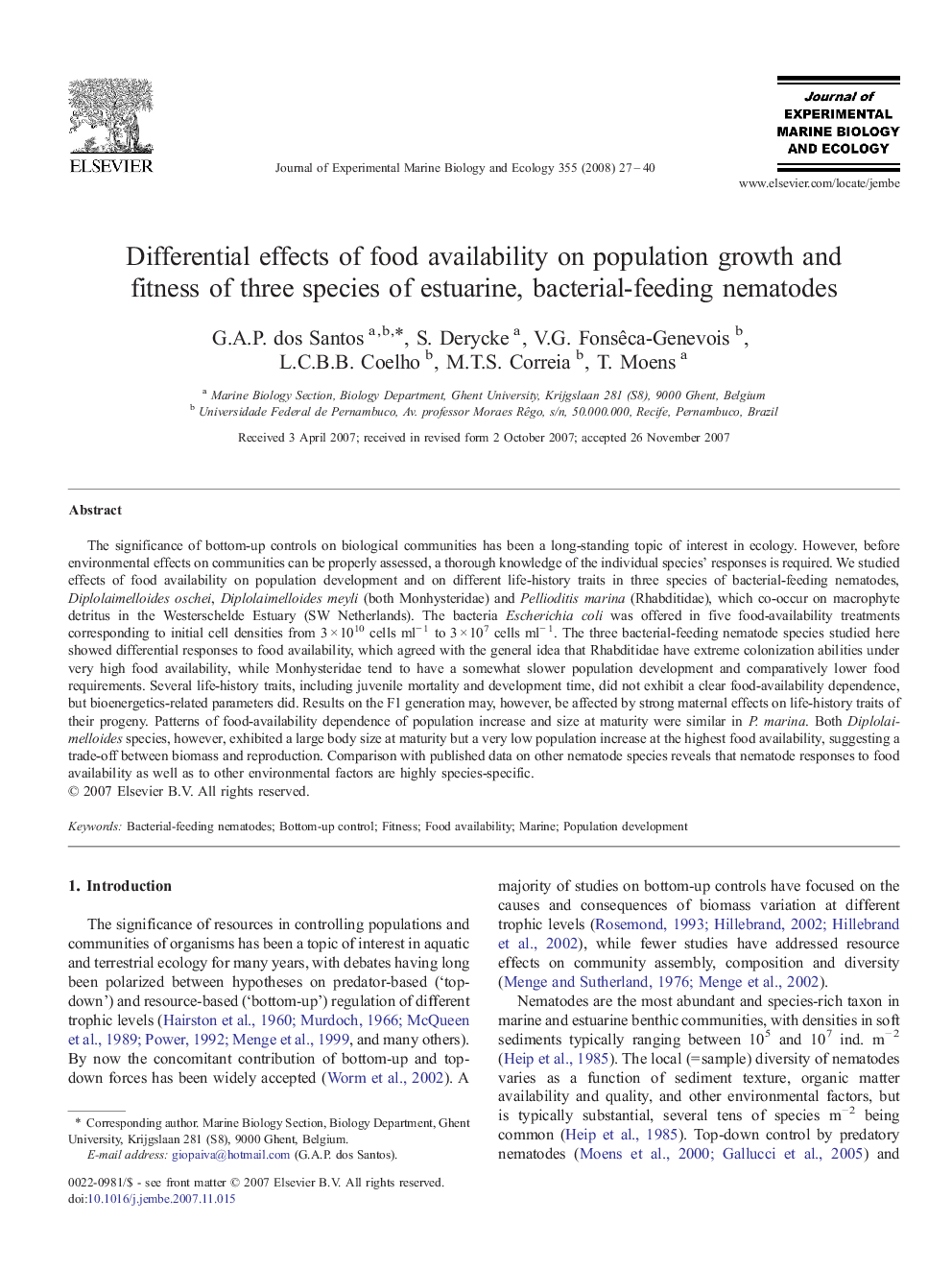| کد مقاله | کد نشریه | سال انتشار | مقاله انگلیسی | نسخه تمام متن |
|---|---|---|---|---|
| 4397566 | 1305893 | 2008 | 14 صفحه PDF | دانلود رایگان |

The significance of bottom-up controls on biological communities has been a long-standing topic of interest in ecology. However, before environmental effects on communities can be properly assessed, a thorough knowledge of the individual species' responses is required. We studied effects of food availability on population development and on different life-history traits in three species of bacterial-feeding nematodes, Diplolaimelloides oschei, Diplolaimelloides meyli (both Monhysteridae) and Pellioditis marina (Rhabditidae), which co-occur on macrophyte detritus in the Westerschelde Estuary (SW Netherlands). The bacteria Escherichia coli was offered in five food-availability treatments corresponding to initial cell densities from 3 × 1010 cells ml− 1 to 3 × 107 cells ml− 1. The three bacterial-feeding nematode species studied here showed differential responses to food availability, which agreed with the general idea that Rhabditidae have extreme colonization abilities under very high food availability, while Monhysteridae tend to have a somewhat slower population development and comparatively lower food requirements. Several life-history traits, including juvenile mortality and development time, did not exhibit a clear food-availability dependence, but bioenergetics-related parameters did. Results on the F1 generation may, however, be affected by strong maternal effects on life-history traits of their progeny. Patterns of food-availability dependence of population increase and size at maturity were similar in P. marina. Both Diplolaimelloides species, however, exhibited a large body size at maturity but a very low population increase at the highest food availability, suggesting a trade-off between biomass and reproduction. Comparison with published data on other nematode species reveals that nematode responses to food availability as well as to other environmental factors are highly species-specific.
Journal: Journal of Experimental Marine Biology and Ecology - Volume 355, Issue 1, 8 February 2008, Pages 27–40